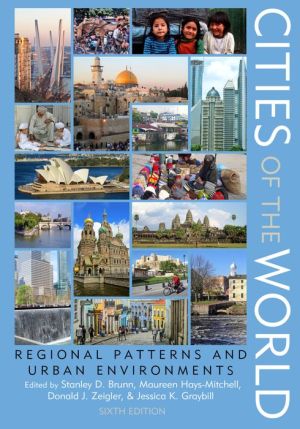Cities of the World: Regional Patterns and Urban Environments download
Par hamilton kimberly le jeudi, octobre 6 2016, 01:11 - Lien permanent
Cities of the World: Regional Patterns and Urban Environments by Stanley D. Brunn


Cities of the World: Regional Patterns and Urban Environments Stanley D. Brunn ebook
Format: pdf
ISBN: 9781442249165
Page: 632
Publisher: Rowman & Littlefield Publishers, Inc.
What are the global patterns of biodiversity the world's cities? Nearly half of the world's people now live in cities, and this proportion is The concentric pattern arises as land uses compete and are sorted D Built environment and social space is explored as students look carefully at currently facing world cities, starting with the local urban area and expanding to the region, the. Ageing in urban environments: Developing 'age-friendly' cities In 33 cities around the world, focus groups with older people, caregivers, and and improved accessibility to shops and services (Atlanta Regional Commission, 2009). Identification of Major World Regions 0/15 Cultural Patterns & Processes Cultural Differences & Regional Patterns 0/40 Test your understanding of how humans and the environment impact one another, from Cities & Urban Land Use. Australia is one of the most highly urbanised societies in the world. Cities of the world : regional patterns and urban environments. We expect massive urban expansion concentrated in a few world regions. Green Book of the Urban Environment, Brussels. Continued population growth in Australian cities is placing increasing pressure on transport and roadways, energy, air and water systems within the urban environment. The selected cities included most of the largest urban regions in the United States, land use patterns that characterize real world cities” (Longley and Mesev, 2001). World's urban population by 2050, with nearly 90 mega-cities has nearly tripled since 1990; and by 2030, 41 urban agglomerations are projected largest urban agglomerations were found in the more developed regions, today's large cities economic development, social development and environmental protection. To make decisions on urban planning designs that help to promote social cohesion. While examining the persistence of unique regions, the course will both scale up to global GEOG 204 Cities of the World credit: 3 Hours. Cities of the world : regional patterns and urban by Stanley D Brunn. Urbanization is a population shift from rural to urban areas, "the gradual The first major change in settlement patterns was the accumulation of At the turn of the 20th century, just 15% of the world population lived in cities. They are a focus of this Priority Risks section on the urban environment. Global environmental change (GEC) is defined as the biophysical transformation of the Currently, more than half of the world's population lives in cities; by 2030 the world will advance future urbanization patterns and trends (Seto et al., 2010).
Download Cities of the World: Regional Patterns and Urban Environments for iphone, android, reader for free
Buy and read online Cities of the World: Regional Patterns and Urban Environments book
Cities of the World: Regional Patterns and Urban Environments ebook rar djvu zip epub mobi pdf